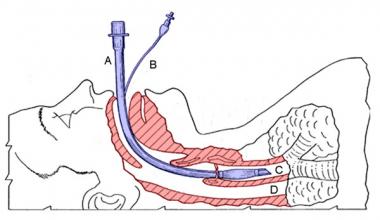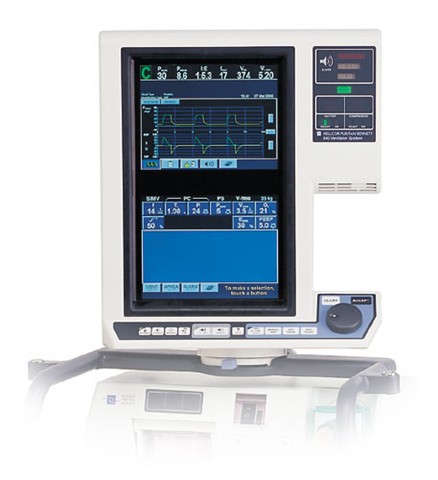
Endotracheal Tube (ET Tube)
Often, patients in critical care do not have the same or usual level of alertness. This can mean they may need help to breathe.
If your loved one needs this help, an ET tube will be placed into the mouth or nose and then into the trachea (windpipe). The tube attaches to the ventilator (see below for more on ventilators). The ET tube passes through the vocal cords, so your loved one will not be able to talk until the tube is removed.

Ventilator
Assists with or controls pulmonary ventilation in patients who cannot breathe on their own. Ventilators consist of a flexible breathing circuit, gas supply, heating/ humidification mechanism, monitors, and alarms.